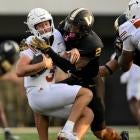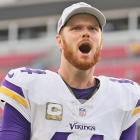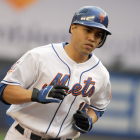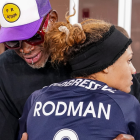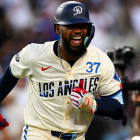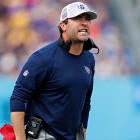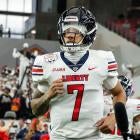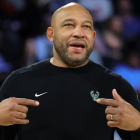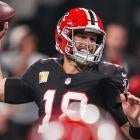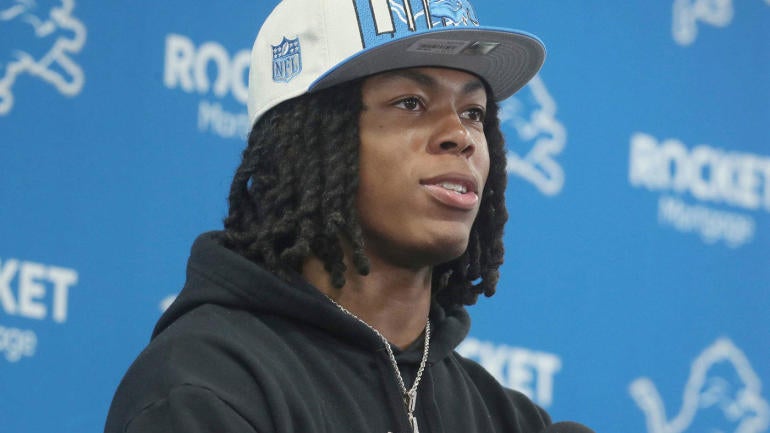
If the NFL Draft were easy to predict, no one would spend months analyzing players, depth charts, team tendencies and more. The reality is that there are always a handful of selections that catch everyone by surprise and those ripples impact the rest of the first round.
Here are five of those choices and why we should have seen them coming:
Seahawks: Devon Witherspoon, CB, Illinois (No. 5 overall)
Detroit and Las Vegas were pegged as teams that could take Witherspoon early in the draft but neither got the chance. Seattle plucked him off the board at No. 5 overall despite adding Tariq Woolen and Coby Bryant in last year's draft. Woolen tied for the league lead in interceptions but his play tapered off in the second half of the season. With the Illinois cornerback spoken for, the Raiders, Lions and others had to go in different directions.
Witherspoon's play warranted early consideration but the thought was that the Seahawks had bigger needs to address. Entering the 2023 NFL Draft, the pacific northwest franchise had just three interior defenders on the roster, zero proven edge rushers and no viable long-term answer at the quarterback position.
Witherspoon is a physical defender that allows the unit to be a strength once again; a statement that has not been true since the Legion of Boom came to an end.
Falcons: Bijan Robinson, RB, Texas (No. 8 overall)
There was significant buzz linking Atlanta and Robinson prior to the draft so there was some foresight to the selection. However, no one viewed the Falcons as being one running back away from Super Bowl contention; never mind the presence of Cordarrelle Patterson and promising rookie Tyler Allgeier. It was a position of luxury when they could have taken Oregon cornerback Christian Gonzalez, Georgia defensive tackle Jalen Carter, Northwestern interior offensive lineman Peter Skoronski or others.
Head coach Arthur Smith is reinventing the Atlanta offense in the image of his former Titans teams, however. They acquired tight end Jonnu Smith from New England and then drafted a bell cow at No. 8 overall. Running back Derrick Henry has averaged 1,420 rushing yards per season over the past five years. With a young quarterback, Desmond Ridder, being handed the nuclear codes this coming season, it was important to take some of the pressure off of him. The offense should flow through Robinson this season and allow Ridder to develop at his own pace.
Lions: Jahmyr Gibbs, RB, Alabama (No. 12 overall)
D'Andre Swift was entering the final year of his rookie contract and the team signed David Montgomery in free agency. Swift has not missed a large chunk of time at any one point but he has never completed a full season injury-free. In hindsight, knowing that Swift was expendable, and eventually traded to the Eagles on Day 3 of the draft, it makes sense that the team would have interest in Gibbs a year after drafting his former teammate, wide receiver Jameson Williams, in the first round. Moving on from him prior to the draft may have tipped off other teams to their draft plans, however.
General manager Brad Holmes was in Los Angeles with quarterback Jared Goff and running back Todd Gurley II. Head coach Dan Campbell had a front row seat for Alvin Kamara's role in New Orleans. Both have always been around an offense that utilizes its running backs in the pass game. Gibbs may be listed as a running back but he was an equally accomplished pass catcher. After the way the Gurley situation played out, Holmes may be a bit skittish of giving a running back a second contract.
Detroit could have explored the idea of selecting more premium positions but running back is justifiable. The Lions' selection of Iowa linebacker Jack Campbell also came as a surprise because of the value. It was a position of need and with so few quality options available, it is a bit easier to understand why they made the decision to take him at No. 18 overall.
Packers: Lukas Van Ness, EDGE, Iowa (No. 13 overall)
With the exception of offensive tackles Bryan Bulaga and Derek Sherrod, Green Bay has not used a first-round pick on a non-quarterback since 2002. Jordan Love is entrenched as the starter at quarterback so it essentially wiped out any possibility of No. 13 overall being used on an offensive player.
Over that same time period, the Packers have taken 18 defensive players in the first round: four edge rushers, four defensive tackles, four linebackers, three cornerbacks and three safeties. On April 23, I wrote a story about the team's proclivity to overload on skill talent when transitioning to a new quarterback and used that as the basis for a theory that they could take a wide receiver or tight end in the first round. The real story is that, yes, they are willing to do everything necessary to support a young quarterback, but not until Day 2.
Therefore, when looking at the roster and identifying aging defensive linemen like Kenny Clark and Preston Smith, it made sense for the franchise to consider the future even though the wheels have not fallen off quite yet.
Jets: Will McDonald IV, EDGE, Iowa State (No. 15 overall)
McDonald was a polarizing prospect because of his limited skill set. He is an explosive rusher off the edge but remains a liability in run defense. Georgia's Nolan Smith could have been considered for a similar role but McDonald has one trait that he performs better than any of his peers in this class: rush the quarterback. Head coach Robert Saleh comes from a San Francisco team that has a wealth of pass rush options and utilizes the wide-9 alignment, which gives players more of a runway to make moves while also narrowing the angle to the quarterback.
New York has players on the edge like Carl Lawson, Jermaine Johnson and Michael Clemons, but none have the speed and burst quite like McDonald. With the offensive tackles off the board, there were a few directions they could have gone.
Commanders: Emmanuel Forbes, CB, Mississippi State (No. 16 overall)
Washington had a need at the cornerback position and Witherspoon was the only prospect at his position taken when the Commanders came on the clock at No. 16 overall. Would they take Penn State's Joey Porter Jr.? Maryland's Deonte Banks? Gonzalez? No, it was Forbes.
Washington defensive coordinator Jack Del Rio was in Jacksonville from 2003-2011. In his first year, the Jaguars selected a little known cornerback from Bethune-Cookman in the second round. Rashean Mathis recorded 14 interceptions during his collegiate career. In 2009, the AFC franchise drafted William & Mary cornerback Derek Cox, who snagged four interceptions and returned two for touchdowns during his senior season. In his first-year with Denver, the Broncos selected Ohio State cornerback Bradley Roby, who had five interceptions in his final two seasons, in the first round.
Head coach Ron Rivera has his own history of drafting cornerbacks with ample ball production. In 2012, the Panthers drafted Coastal Carolina cornerback Josh Norman in the fifth round. Norman had 11 career interceptions, including eight as a sophomore. Daryl Worley had nine interceptions over his final two years with the Mountaineers. James Bradberry had eight career interceptions at Samford.
Gonzalez had four interceptions in his final season with Oregon, but had zero up to that point in his career. A common complaint with Porter and Banks is that they did not get their eyes back to locate the ball in coverage. It may come as a surprise that Forbes went before Gonzalez, but it should not come as a surprise that Washington was heavily invested in the slim-framed corner from Starkville.









